Text
Mawari: Dancing With Nagato
During the class, we began with taijutsu and ended with hanbō jutsu. In both cases, the Kaname, or key point, was Mawari, to turn around the opponent softly but without stopping. (1)(2) This permanent motion around him prevents uke from answering to a specific action. When Nagato sensei was walking around the attacker, you could see the opponent gradually losing his balance. There were too…

View On WordPress
0 notes
Text
All Is Already There!
During Paul’s calligraphy session mid-class, he wrote “Tōgi ku ni tamotarete iru” the way Hatsumi Sensei wrote it in the past. (1) Imagine a world where every possible outcome, every attack, every event—already exists, shimmering just beneath the surface of the present moment. That is not just the stuff of science fiction or mystical poetry; it’s a concept deeply embedded in Japanese thought…

View On WordPress
0 notes
Text
Is There A Tiger In The Willow Tree?
After the Kotō ryū of the other day, Noguchi sensei began the study of the Chūden no Sabaki Gata from the Takagi Yōshin ryū, starting with Katamune Dori. A group of 20 students gathered to attend the class, and I was happy to see many “old-timers”. There is nothing disrespectful here. People at Noguchi sensei’s classes are mainly practitioners who have been attending his classes for ten or…

View On WordPress
0 notes
Text
Be Incomplete!
A class with Nagato sensei is never easy, even after training with him for 35 years. I know his taijutsu, I understand his movements, but I cannot get his flow. That is what many practitioners often fail to understand. The Japanese Sōke and Dai Shihan will not teach you techniques; they will convey the essence of Bujinkan Budō. If you want to collect Waza, don’t come here. You should do your…

View On WordPress
0 notes
Text
Did Superman study Kotō ryū?
The first class of this trip was with my mentor, Noguchi sensei, Sōke of Kotō ryū. (1) I trained with him only from 1993 to 1997. After the opening of the first Honbu (2), Sensei authorised me to attend classes by the Shi Tennō: Senō, Nagato, Oguri, and Noguchi (3). That is still the case today. (4) After visiting Japan every four months for many years, I only returned to Honbu in March 2023.…
0 notes
Text
Andragogue Or Pedagogue? (part 2)
Andragogy is a pedagogy adapted to adults. (1) It primarily deals with education. This article is the follow-up of our previous article on the subject, published two weeks ago. (2) In this second part, we will cover the last three items of the andragogy system developed by Knowles. (3) Japan is a hierarchical cultural society, and andragogy is not the best system for their culture. Westerners…

View On WordPress
0 notes
Text
Do You Believe In Andragogy Or Pedagogy? (part 1)
A few months ago, Sebastian from Brazil came to train in Paris for a week. We had fun on the mats and outside and discussed a lot. Pedagogy in the dōjō was one topic. At one point, Sebastian coined “Andragogy” or “pedagogy for adults.” I didn’t know the term. After reading about it, I would like to share my thoughts here. (1) When you create a new dōjō from scratch as a young teacher, beginner…
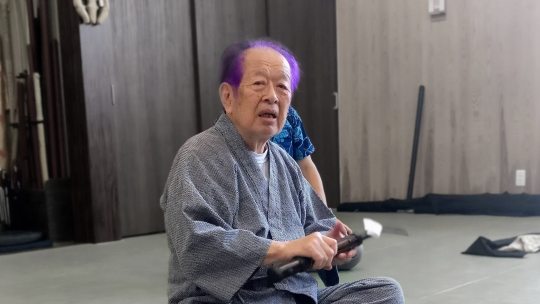
View On WordPress
0 notes
Text
True Bujin Trains Reversible Thinking. Are You?
A critical aspect of Budō is to accept the change offered by Nature. We keep adapting our certitudes to new realities. This evolution requires hard work and humility. As a young teacher, I was sure I knew all the correct answers. And I was critical of the other high-rank teachers. It was more “ego” than “knowledge” with a pinch of immaturity. We all go down the same rabbit hole. The main goal on…
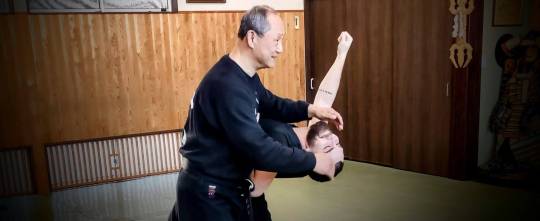
View On WordPress
0 notes
Text
Kawaru: Are You Giving A Chance To Change?
This morning, I read a post by my friend Alexander Ivanov, a Wudang instructor from Sofia, Bulgaria. The following sentence made me think and enticed me to write about change. “To blindly go where everyone walks is the same as ignoring a new experience for the familiar.” In other words, following the same behaviour as others does not get you anywhere. Einstein said, “Insanity is doing the same…

View On WordPress
1 note
·
View note
Text
Master One To Master All
At the end of the class, Nagato sensei said, “if you master one thing, you can master anything”. It reminded me of how Musashi became a fantastic painter after mastering the art of the sword. (1) In his famous book “Gorin no Sho”, he writes, “When I apply the principle of strategy to the ways of different arts and crafts, I no longer require a teacher in any domain.” (2) This universal mastery…

View On WordPress
0 notes
Text
Encounter With A Polisher
The Japanese Dai Shihan show how to polish our movements; I call them “polishers” for that reason. My younger son Amaury is 27 years old, and this is his first Japan trip. Entering Nagato sensei’s class, he had the time of his life as he was his uke for the course. Being the son of the polar bear, it was obvious that Nagato sensei would use him as uke. I should have told him in advance, but…
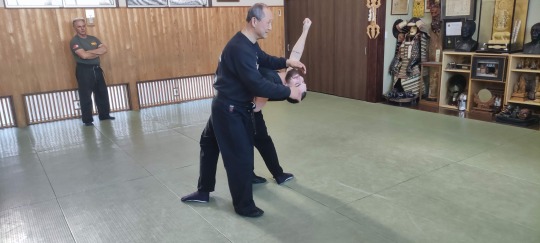
View On WordPress
0 notes
Text
Kannin: Keep Going!
Theme for 2023 is Kannin, keep going!
With my brother-in-arms Pedro, and a few others, we had the chance to share lunch with Sensei. During this time, he said, “this year, the important is Kannin, keep going.” (1) There are several meanings to Kannin. Kannin refers to a period in Japanese history at the beginning of the 11th century (1017-1021). (2) Then during the Heian Jidai, it became a generic term referring to the officials…

View On WordPress
0 notes
Text
Change Is A Chance
Before the pandemic, I used to go and train in Japan every four months. It has been four years since my last trip in May 2019! Needless to say that I was dying to come back. COVID has changed a lot of things in many aspects all over the world, in Europe and the Americas. So I was expecting to see the same here in Japan. And it is the case; change is everywhere in Japan. It might be a detail, but…
View On WordPress
0 notes
Text
Is Magic, Really Magic?
Is Magic, Really Magic?
Last Friday, we continued the study of the Tenchijin. We trained some basic Gyaku waza movements. After two years of pandemics, our dōjō is still trying to survive. Our training group is so small that it feels like beginning a new dōjō. We might rename the Kuma dōjō the dōjō of the phoenix! I teach beginners, intermediates, and advanced all at once. Teaching various levels is difficult as each…
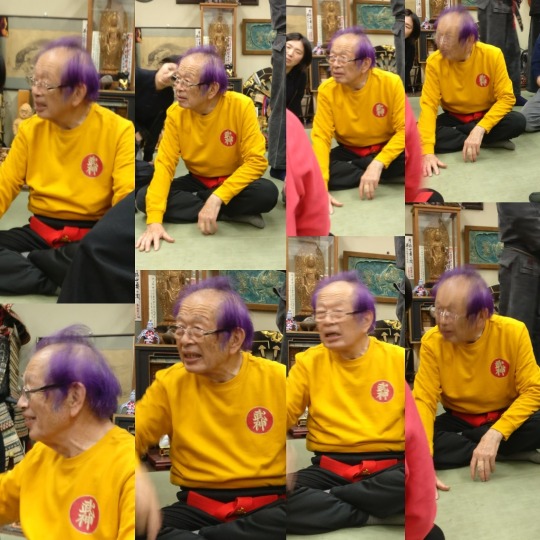
View On WordPress
0 notes
Text
Jūjiro Or The Indirect Fight
Jūjiro Or The Indirect Fight
In the Kukishin ryū, there is one central concept that many don’t know, and it is called “Jūjiro”. (1) With the pandemic, everyone experiences difficult times, and it seems that many of us should be reminded of some basic concepts. Jūjiro is one of them. Bujinkan practitioners often do not understand or never heard of what is Jūjiro. Let me refresh your memories about the Kukishin Ryū. When…
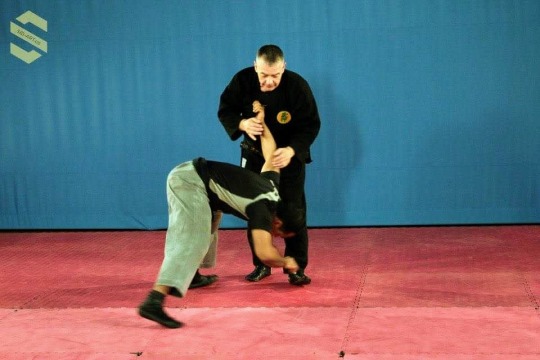
View On WordPress
0 notes
Text
Is 2022 A Dive Into The Abyss?
Is 2022 A Dive Into The Abyss?
Happy Shinnen to all! This 新年 (shinnen) is the Japanese for “New Year”. (1) This became a particular date only when humans began counting time. But this cosmic event has been going on for more than 4.5 billion years. So if humans put so much weight on this date, I guess it is to get a new start every 365 days. In the Bujinkan, this fresh start always coincided with a new study theme. Sōke…

View On WordPress
0 notes
Text
Everything Is Possible
After many years you understand that whatever the odds, everything is possible as long as you don’t give up. If you can think outside the box, everything is possible. If you only follow the rules, you become the source of your limits. Thinking outside the box in Budō demands that you already have a deep understanding of the basics. The Kukishin Biken Jutsu details everything in three sets of…

View On WordPress
0 notes